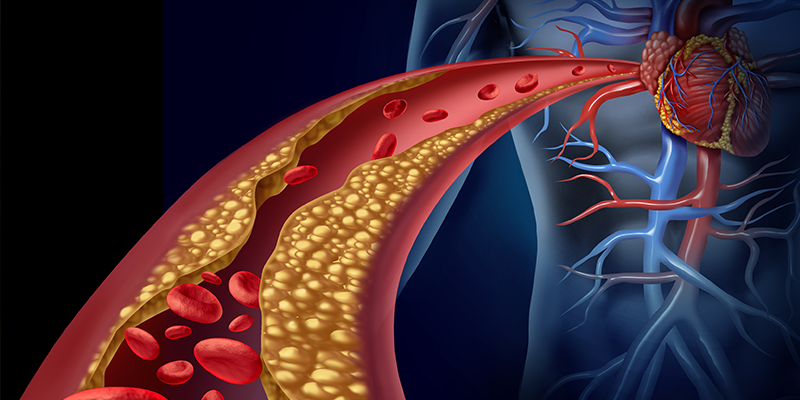September 13, 2017, Source: Amen Clinics
If you find yourself forgetting things and you’re out of shape, getting fit could be the path back to a better memory.
The reason: Aerobic exercise provides greater blood flow to your brain, especially to the hippocampus, a region that’s crucial to memory. New research in 51 healthy men and women, ages 18-35, found that those who had the highest fitness levels had a firmer, more elastic hippocampus and scored the best on memory tests.
Healthy blood flow is crucial to your brain—and to your whole body. In fact, if you keep your blood vessels healthy you may be able to avoid not only memory loss and Alzheimer’s disease, but also high blood pressure, heart disease, stroke, and erectile dysfunction, among other health problems. You’ll also have a lot more energy and you’re less likely to be overweight.
Problems with Low Blood Flow
Brain imaging studies reveal that low blood flow is related to many behavioral and psychiatric issues. SPECT is a type of brain imaging study that measures the brain’s blood flow and activity. Low blood flow seen on SPECT brain scans has been seen with:
- Depression
- Suicide
- Bipolar disorder
- Schizophrenia
- ADD/ADHD
- Traumatic brain injury
- Hoarding
- Murder
- Substance abuse
- Seizure activity
Low blood flow is the #1 brain imaging predictor that a person will develop Alzheimer’s disease.
Blood flow is so important, we’ve made it the first risk factor in the Amen Clinics’ new BRIGHT MINDS Program, which identifies and treats the 11 risk factors that can steal your memory and your mind. We now know this is the best way to keep your memory sharp for the rest of your life.
The risks are summed up in the words BRIGHT MINDS, which is an easy way to remember them:
B – Blood Flow
R – Retirement/Aging
I – Inflammation
G – Genetics
H – Head Trauma
T – Toxins
M – Mental Health
I – Immunity/Infection Issues
N – Neurohormone Deficiencies
D – Diabesity
S – Sleep Issues
Are You at Risk for Blood Flow Issues?
You’ll know blood flow is a risk factor for you if you have any of the following:
- Hypertension or prehypertension
- Stroke
- Cardiovascular disease
- Cholesterol problems
- Erectile dysfunction
- Sedentary lifestyle (exercise less than twice a week)
- Sleep apnea
- Obesity
Certain every day habits can also put you at increased risk of low blood flow, including:
- Drinking more than 2 cups of caffeinated drinks a day
- Smoking or ingesting nicotine
- Excessive alcohol use
- Smoking marijuana
- Not staying adequately hydrated
But if you’re unsure whether or not you have blood flow problems, we recommend that you pay a visit to your health-care provider for a checkup where your blood pressure is measured and you get the following lab tests:
- Complete blood count (CBC)
- Lipid panel (including total cholesterol, HDL cholesterol, LDL cholesterol, triglycerides)
How to Boost Blood Flow
There are lots of ways to improve your blood flow, including treating high blood pressure, cholesterol or other vascular problems, and avoiding cigarettes and caffeine, which constricts blood flow to the brain. Here are more easy, beneficial moves:
- Hydrate better! Drinking at least 5 glasses of water a day could decrease your risk of hypertension
- Drink more green tea
- Limit salt intake
- Take a good multivitamin/mineral, vitamin D, magnesium and an omega-3 EPA/DHA supplement daily
- Support your memory with ginkgo biloba extract
- Enjoy an ounce of dark chocolate every day (for the cocoa flavanols)
- Eat more beets, green leafy vegetables, berries, pumpkin seeds, and cayenne pepper
- Increase your intake of foods high in magnesium, such as avocados, nuts, and seeds
- Eat more foods loaded with potassium, such as spinach and sweet potatoes
- Limit alcohol, fruit juices, and sodas (including diet sodas)
- Sleep 7 to 8 hours a night, and if you have sleep apnea, get it assessed and treated
And, of course, exercise!
Racquet sports are particularly beneficial: A 2016 study in the British Journal of Sports Medicine that followed more than 80,000 adults found that those who play tennis, table tennis, squash, and other racquet sports had the lowest risk of dying during the nearly decade-long research. Swimming and aerobics are good choices, too. And if you walk, just be sure to keep up the pace to get the most benefits.
Another way to boost blood flow is with hyperbaric oxygen therapy (HBOT). HBOT is a simple, non-invasive, painless treatment with minimal side effects that use the power of oxygen to enhance the healing process. Before-and-after SPECT scans of people who have undergone HBOT reveal remarkable improvement in blood flow.

